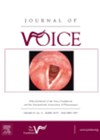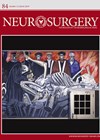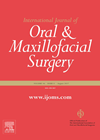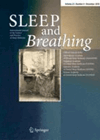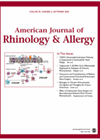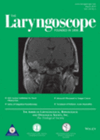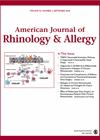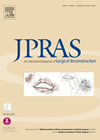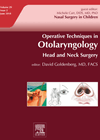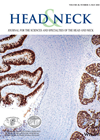
Journal Reviews
Long-term voice outcomes following transoral laser surgery versus radiotherapy for early laryngeal cancers
The oncological outcomes of transoral laser microsurgery (TOLM) for early laryngeal cancers are well-known to be very similar to radiation therapy (RT). The functional outcomes associated with each treatment modality are therefore of significant interest. This study is reported to...
Recovery room cortisol to predict long-term glucocorticoid supplementation
The authors report the results of using recovery room (RR) cortisol to predict the need for long-term glucocorticoids in patients who underwent transsphenoidal surgery (TSS). They conducted a retrospective study of preoperative morning serum cortisol (MSC), RR cortisol and day...
Soft tissue changes following maxillary osteotomy, comparison of three computer programmes
This small group of seven patients had a Le Fort I advancement maxillary osteotomy with vertical repositioning and alar base cinch sutures. They were assessed with cone beam CT’s three months preoperatively and one year postoperatively. A clinical comparison between...
DISE as a rationalising tool for sleep apnoea surgery
This retrospective study on 85 adult obstructive sleep apnoea (OSA) patients provides further interesting information for sleep surgeons. These patients were all investigated with polysomnography (PSG) and drug induced sleep endoscopy (DISE). They all then underwent a simple uvulopalatoplasty with...
Balloons – more complicated than first thought?
This study describes the complications seen after balloon sinuplasty (BSP) - a commonly performed procedure (particularly in the USA where it is often performed as an office procedure) versus traditional functional endoscopic sinus surgery (FESS). The data source was a...
Does Tranexamic acid reduce intraoperative bleeding during FESS?
Intraoperative bleeding during FESS can reduce visibility and obscure important landmarks. This can result in longer operative times, increase risks of complications and even lead to incomplete surgery. Tranexamic acid is a drug which prevents fibrinolysis and stabilises blood clots....
A novel way to reduce postoperative nausea and vomiting
This is an interesting RCT which evaluates the prophylactic effect of bilateral endoscopic injection of local anaesthetic in the sphenopalatine ganglion (SPG) on postoperative nausea and vomiting (PONV). It has a robust design, and is sufficiently powered and blinded, with...
Are ENT surgeons better placed to perform cosmetic ear, nasal and facial procedures?
Cosmetic surgery is an essential component of plastic surgery training and is required in order to CCT. However, the training opportunities in plastic surgery in UK are limited. The current operative requirements for plastic surgery trainees are 100 procedures during...
The snotty child?
This article is interesting for those of us who see children regularly in secondary care but rarely see them with chronic rhinosinusitis. The authors remind the reader of the EPOS guidelines for diagnosis of CRS in children: two or more...
When to treat a fractured mandible?
This is a prospective study from Brisbane of 215 patients with a total of 359 fractures of the mandible. Nine outcome variables were analysed with a further 19 included to adjust for potential confounding. Treatment delay was found not to...
Measuring the ‘impact’ of preoperative immunonutrition
Using preoperative nutritional supplements as part of ‘enhanced recovery’ in surgical patients is not a new concept. This interesting paper looks at the latest development in optimising patients undergoing head and neck oncological surgery. Immunonutrition (Nestle’s ‘Oral Impact’ in this...
Tranexamic acid and blood loss in bimaxillary surgery
This is a randomised double-blind placebo-controlled trial from Thailand to clarify the most effective dose of Tranexamic acid in reducing blood loss during a bimaxillary osteotomy. They confirmed that the dose of 10mg per kg is the most efficacious and...

